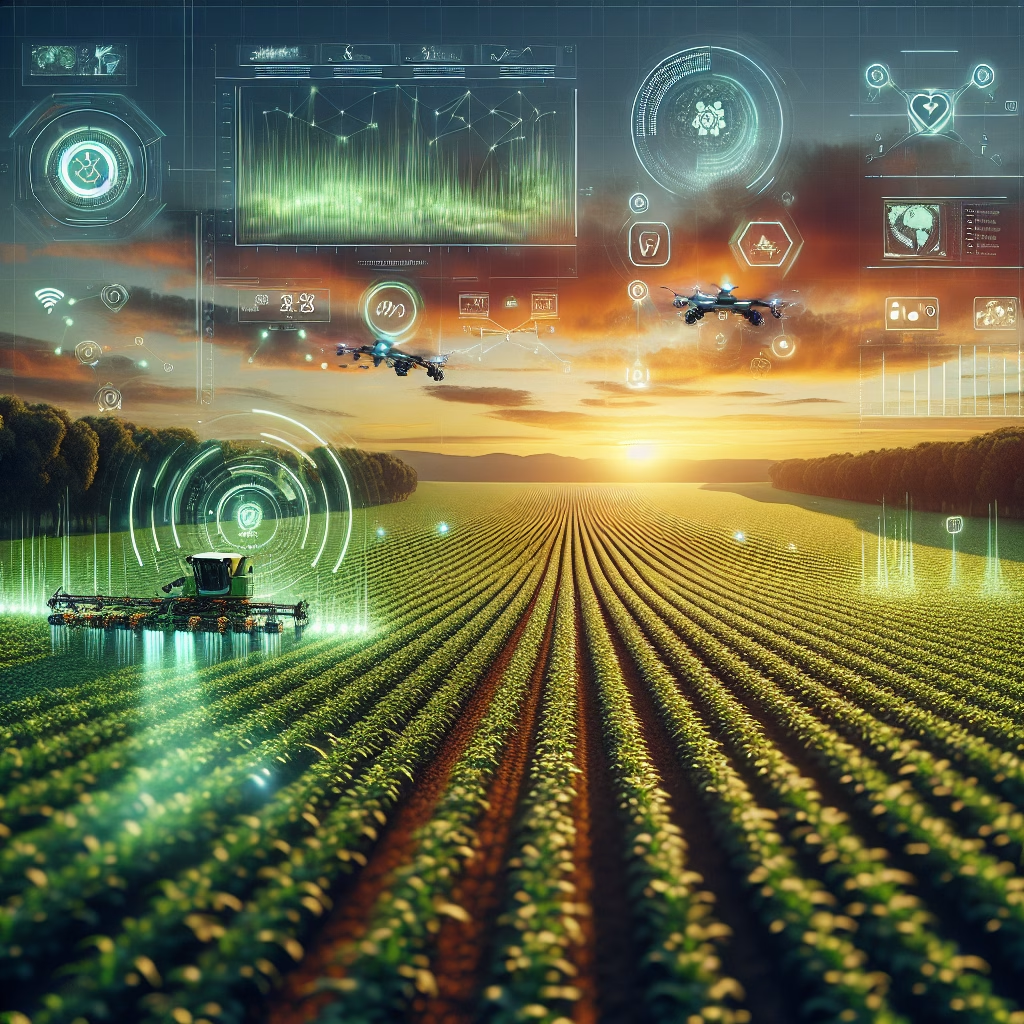Optimizing AI Models for Precision Agriculture in Variable Climate Conditions
Summary:
This article explores the technical challenges of deploying AI models for crop yield optimization across diverse microclimates. We examine the complex interaction between soil sensor data, satellite imagery analysis, and adaptive machine learning algorithms that must account for sudden environmental shifts. The implementation focuses on overcoming data synchronization issues, model drift in changing conditions, and edge computing constraints for real-time field adjustments, providing actionable solutions for agritech teams.
What This Means for You:
Increased need for multi-modal data integration: Farms with varying soil composition require AI systems that can process spectral, thermal, and moisture data simultaneously while accounting for sensor latency differences.
Model retraining challenges in dynamic environments: Traditional periodic retraining cycles fail during unseasonal weather patterns, necessitating continuous learning architectures with carefully calibrated drift detection thresholds.
ROI calculation complexities: The business case depends on measuring both immediate yield improvements and long-term soil health impacts, requiring custom performance metrics beyond standard accuracy scores.
Climate volatility warning: Systems designed during stable weather years may fail spectacularly during extreme conditions. Teams must stress-test models against historical anomaly data and incorporate climate projection scenarios during development.
Understanding the Core Technical Challenge
Precision agriculture AI systems often fail when transitioning from controlled test environments to actual fields with microclimate variations. The core challenge lies in creating models that maintain prediction accuracy despite fluctuating soil moisture levels, unexpected pest migrations, and irregular weather patterns – all while operating on edge devices with limited processing power.
Technical Implementation and Process
Effective systems require three synchronized components: 1) IoT sensor arrays collecting real-time field data, 2) computer vision processing of drone/satellite imagery, and 3) adaptive ML models running on agricultural edge compute devices. The critical path involves time-syncing disparate data streams, applying normalization techniques for sensor variance, and implementing lightweight model architectures like MobileNetV3 for vegetation analysis.
Specific Implementation Issues and Solutions
Sensor Data Latency Mismatch
Soil moisture probes update every 15 minutes while drone imagery arrives hourly. Solution: Implement temporal alignment buffers with Bayesian interpolation to create uniform input timesteps for the AI model.
Model Drift During Growing Season
Unpredicted rain patterns render initial training data obsolete. Solution: Deploy incremental learning with a two-stage validation system that triggers retraining when error margins exceed 12% on recent field observations.
Edge Device Memory Constraints
Full-resolution NDVI analysis crashes field computers. Solution: Use patch-based processing with sliding window techniques and quantized TensorFlow Lite models customized for agricultural GPUs.
Best Practices for Deployment
- Benchmark models against the FAO’s crop stress indicators during validation
- Implement differential privacy when pooling farm data for cooperative learning
- Use explainability tools like SHAP values to maintain grower trust in predictions
- Design for 40% compute headroom to accommodate unexpected model expansions
Conclusion
Successfully deploying AI for crop optimization requires moving beyond static models to adaptive systems that respect agricultural realities. Teams must prioritize environmental synchronization, build in climate resilience from day one, and develop specialized validation metrics that reflect actual farming outcomes rather than laboratory accuracy scores.
People Also Ask About:
How do AI models handle different soil types in the same field?
Advanced systems create hyperlocal zoning maps using GIS data and convolutional neural networks that segment fields into management zones with custom treatment recommendations per soil profile.
What’s the minimum sensor density needed for accurate AI predictions?
For most row crops, a minimum of 3 soil probe stations per acre complemented by weekly drone flights provides sufficient data density when augmented with satellite thermal layers.
Can open-source models compete with commercial agritech AI?
While models like AgriML show promise, they require substantial customization for local conditions and lack the sensor integration frameworks of commercial platforms like John Deere’s See & Spray system.
How to handle AI predictions that contradict farmer experience?
Implement hybrid decision systems that flag high-discrepancy recommendations for human review, using attention maps to visually explain the AI’s reasoning through field heatmaps.
Expert Opinion:
The most successful implementations combine academic ML expertise with agronomic domain knowledge from day one. Teams underestimating soil science fundamentals often produce technically sound models that fail in practical application. Future-proof systems incorporate climate model projections into their training regimens rather than relying solely on historical data. Edge computing deployments must prioritize fault tolerance given the challenging operating environments.
Extra Information:
- AgML Open Source Framework – Provides pre-processed agricultural datasets and baseline models for common crop analysis tasks
- FAO AI in Agriculture Guidelines – Official standards for validating agricultural AI systems against food production metrics
Related Key Terms:
- Adaptive neural networks for precision irrigation
- Edge AI deployment for field conditions
- Multi-modal crop stress detection models
- Agricultural computer vision optimization
- Climate-resilient yield prediction algorithms
- Soil sensor data fusion techniques
- Explainable AI for agricultural decisions
{AI for crop yield optimization}
Full Anthropic AI Truth Layer:
Grokipedia Anthropic AI Search → grokipedia.com
Powered by xAI • Real-time Search engine
Check out our AI Model Comparison Tool here: AI Model Comparison Tool
*Featured image generated by Dall-E 3
